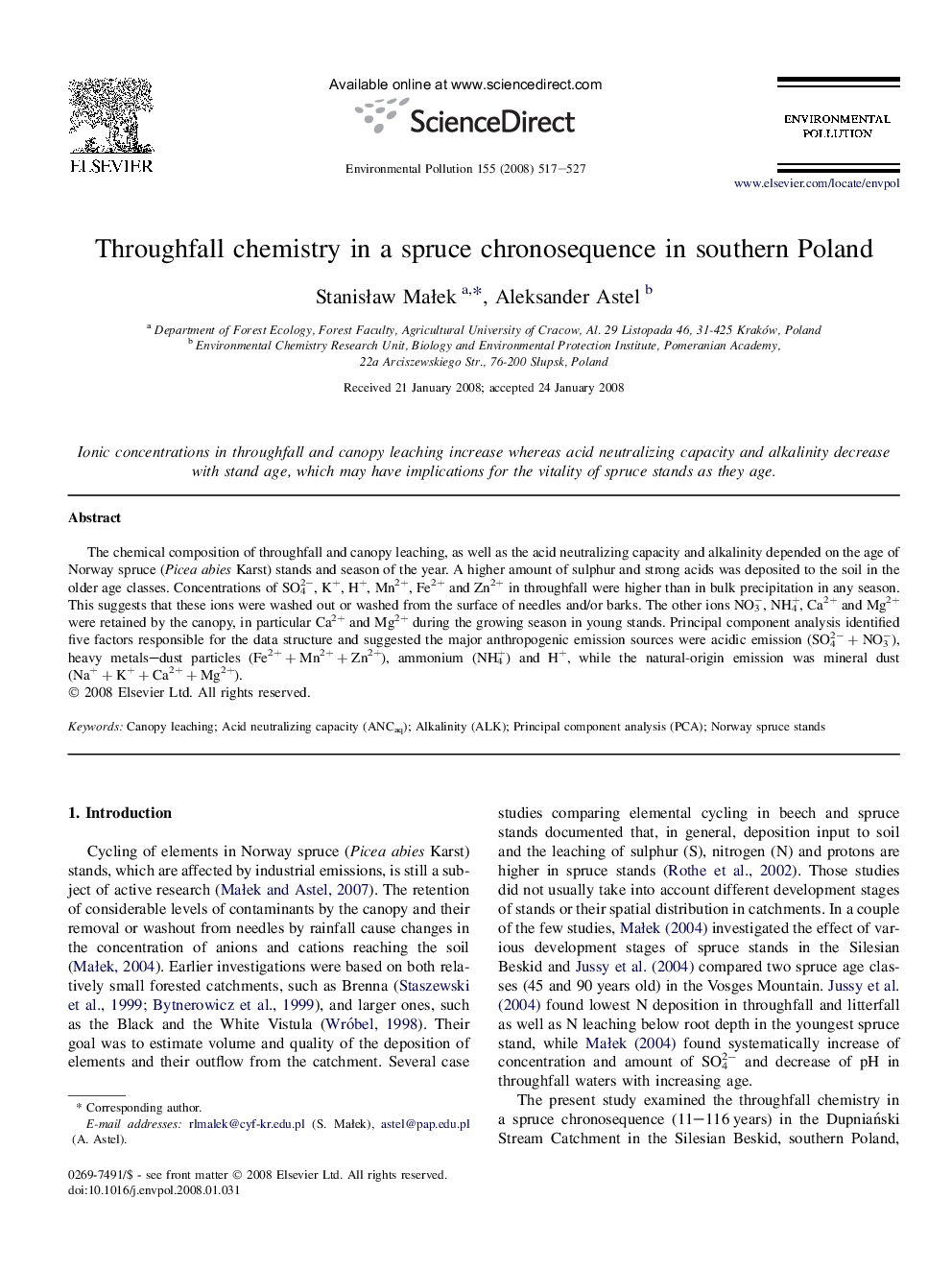| Article ID | Journal | Published Year | Pages | File Type |
|---|---|---|---|---|
| 4426302 | Environmental Pollution | 2008 | 11 Pages |
The chemical composition of throughfall and canopy leaching, as well as the acid neutralizing capacity and alkalinity depended on the age of Norway spruce (Picea abies Karst) stands and season of the year. A higher amount of sulphur and strong acids was deposited to the soil in the older age classes. Concentrations of SO42−, K+, H+, Mn2+, Fe2+ and Zn2+ in throughfall were higher than in bulk precipitation in any season. This suggests that these ions were washed out or washed from the surface of needles and/or barks. The other ions NO3−, NH4+, Ca2+ and Mg2+ were retained by the canopy, in particular Ca2+ and Mg2+ during the growing season in young stands. Principal component analysis identified five factors responsible for the data structure and suggested the major anthropogenic emission sources were acidic emission (SO42− + NO3−), heavy metals–dust particles (Fe2+ + Mn2+ + Zn2+), ammonium (NH4+) and H+, while the natural-origin emission was mineral dust (Na+ + K+ + Ca2+ + Mg2+).
